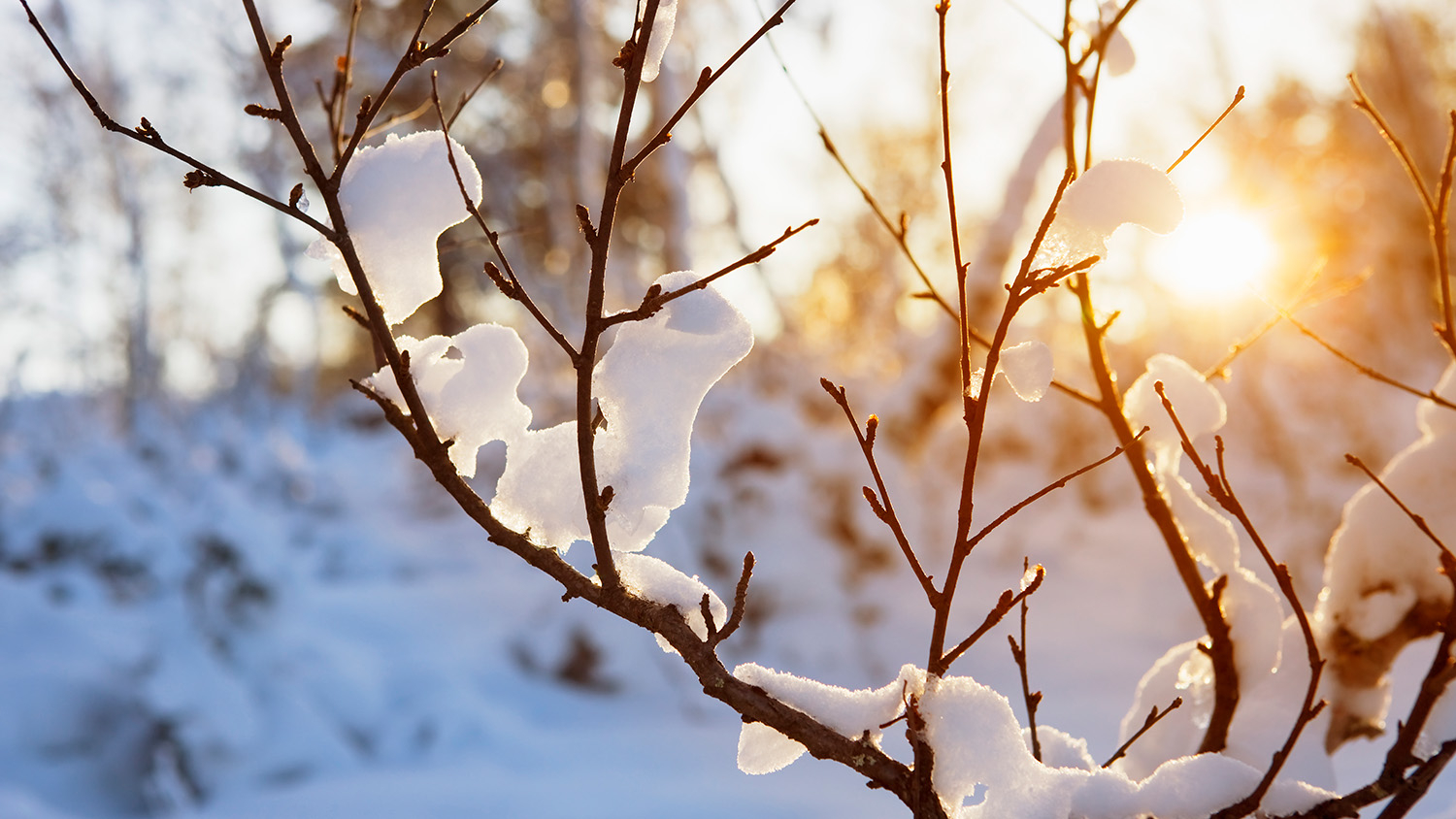How Trees Survive in Winter

Winter can take a toll on all living things, especially trees. Unlike humans and animals, trees are rooted in the ground and can’t seek shelter from freezing temperatures, heavy snow and strong winds. But that doesn’t mean they’re completely defenseless.
“Trees have developed a number of adaptations over the centuries to help them endure these kind of extreme conditions,” said Robert Bardon, a professor of forestry and environmental resources and associate dean of extension at the NC State College of Natural Resources.
Deciduous trees, for example, enter a period of rest similar to hibernation in order to conserve energy. This period, known as dormancy, begins in the fall. As the temperatures drop and the days grow shorter, trees produce a stress hormone called abscisic acid.
Abscisic acid closes the connection between the leaves and stems, inhibiting the flow of water and nutrients. This causes trees to stop producing the green chlorophyll within their leaves. Chlorophyll converts carbon dioxide and water into sugar through photosynthesis. Trees rely on sugar for energy.
The loss of chlorophyll causes the leaves to change color for several weeks before they eventually die and fall off their stems. Meanwhile, as trees continue their transition into dormancy, the abscisic acid slows their metabolism and growth rate so that the trees can conserve sugar for the winter.
Without leaves on their branches to perform photosynthesis, dormant trees must rely on sugar produced during the spring and summer to survive. The sugar helps to maintain the health of the roots and other internal structures. It also acts like an antifreeze, decreasing the freezing point of individual cells within trees.
Conifer trees, such as pines and spruces, also slow their growth in the winter, though they don’t go entirely dormant. Their needles have a thick, waxy coating that retains more water than normal leaves. Because of this, most conifer trees maintain their needles year-round. This allows them to capture more sunlight.
Even with these adaptations, trees can experience significant damage when exposed to extreme conditions. If it gets too cold, for example, the sap inside the tree can freeze just beneath the bark. Sap contains water so it expands when frozen. This creates pressure, which pushes against the bark and causes it to crack or explode.
Bark acts like insulation for trees and protects them against freezing temperatures. If the bark cracks or explodes, it loses that ability and the living tissues can become exposed to and damaged by freezing temperatures. Young trees are more susceptible to this because their thin bark is less resistant to changes in temperature.
In addition to the damage caused by freezing temperatures, trees also have to contend with the effects of heavy snow, ice and wind during the winter. Heavy snow and ice can accumulate on tree branches, causing them to break under the added weight. Strong winds can easily snap branches and even knock over trees with weak roots.
Winter conditions can reduce floral activity in the spring, according to Bardon. Flower buds are most resilient when fully dormant. Flower buds that experience warm periods in very early spring can break dormancy, and then when exposed to a late freeze or hard frost, are very susceptible to damage.
Bardon said the prevalence of frost damage varies from location to location. Most trees have evolved to survive the coldest temperatures of their natural environments, though winter poses a significant challenge for species that evolved in the southern United States and other parts of the world with warmer climates.
While winters are becoming shorter and warmer due to climate change, it doesn’t mean an end to freezing temperatures and other extreme conditions. Research suggests that global warming is pushing Arctic air to southern latitudes more frequently, and as a result, Americans can expect harsher winters.
“Our native trees are adapted to these types of events,” Bardon said. “But there are things that people can do to increase their chances of survival.”
The USDA Plant Hardiness Zone Map displays hardiness zones for all zip codes across the country. Each of the 26 zones is based on the average annual extreme minimum temperature during a 30-year period. By selecting the appropriate hardiness zone, people can make sure they select trees and plants that are suitable for their winter weather conditions.
In addition to selecting trees that are appropriate for their hardiness zone, people should consider applying mulch around the base of their trees to insulate the soil. This will help to keep the roots warm during periods of extreme cold. It’s also important to conduct routine maintenance during the growing season.
- Categories: